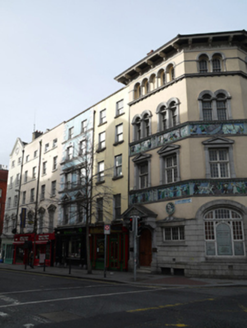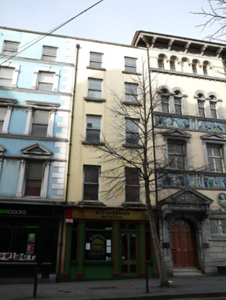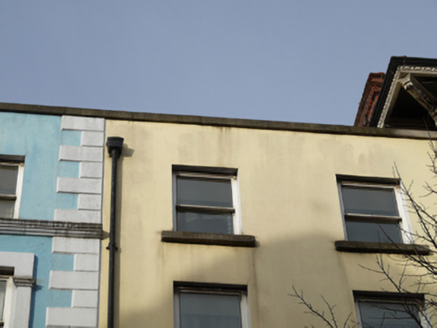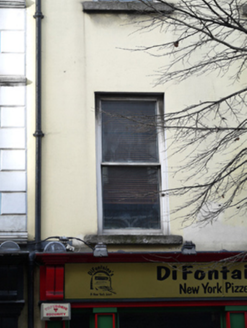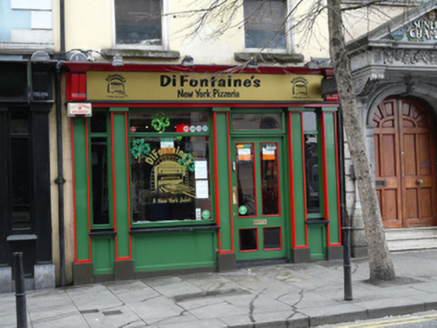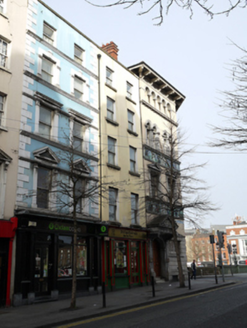Survey Data
Reg No
50020002
Rating
Regional
Categories of Special Interest
Architectural, Social
Original Use
Shop/retail outlet
In Use As
Restaurant
Date
1770 - 1790
Coordinates
315414, 234144
Date Recorded
28/02/2015
Date Updated
--/--/--
Description
Attached two-bay five-storey former house with recent shopfront, built c.1780, now in use as restaurant. Hipped roof, set perpendicular to street, hidden behind smooth rendered parapet with rendered coping to front (east) elevation. Smooth rendered wall to front elevation. Square-headed window openings with cut granite sills and replacement windows. Recent painted timber shopfront having timber panelled pilasters, fascia and cornice, square-headed window openings with timber framed windows, square-headed door opening with glazed timber panelled door and overlight. Situated on west side and south end of Parliament Street.
Appraisal
Parliament Street is the first example of formal axial planning in mid-eighteenth-century Dublin. When George Semple designed the rebuilding of Essex Bridge (1753-55) his plan showed a new wide street linking the bridge to Dublin Castle, and this plan for Parliament Street was implemented by the Wide Street Commissioners in 1762. Many of the buildings, including this one, were altered and rebuilt in the nineteenth century. It shares a parapet height with its neighbours to the south, lending a sense of continuity to the streetscape. The proportions of its upper floor openings attribute a hierarchy to each floor, creating a pleasantly balanced façade, that is typical of contemporary townhouses. Historic maps show that the building was formerly numbered 10 Essex Bridge. It is described in Thom's Directory of 1862 as being in use as a bookseller, printer and stationer as well as housing the committee rooms for the Society of St. Vincent de Paul and for the Association for the Propagation of the Faith. It is reported by Casey (2005) to have had a very fine interior stucco decoration that was removed in 1994.
